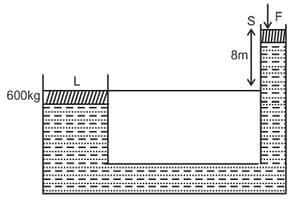A force of is executed on a hydraulic piston of cross sectional area of . The cross-sectional area of other piston which supports a truck of a tonne weight is [use ]
Important Questions on Thrust and Pressure

Two liquids of densities and are filled up behind a square wall of side as shown in figure. Each liquid has a height of The ratio of the forces due to these liquids exerted on upper part to that at the lower part is (Assume that the liquids are not mixing):
An open-ended U-tube of uniform cross-sectional area contains water (density ). Initially the water level stands at from the bottom in each arm. Kerosene oil (a water-immiscible liquid) of density is added to the left arm until its length is , as shown in the schematic figure below. The ratio of the heights of the liquid in the two arms is
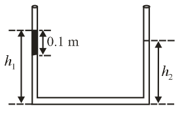
(Acceleration due to gravity )
[Take surface tension of water , angle of contact and density of water
A cylindrical vessel containing a liquid is rotated about its axis so that the liquid rises at its sides as shown in the figure. The radius of vessel is and the angular speed of rotation is . The difference in the height, of liquid at the Centre of vessel and at the sides of the vessel will be :

Given below are two statements: one is labelled as Assertion A and the other is labelled as Reason R
Assertion A: When you squeeze one end of a tube to get toothpaste out from the other end, Pascal’s principle is observed.
Reason R: A change in the pressure applied to an enclosed incompressible fluid is transmitted undiminished to every portion of the fluid and to the walls of its container.
In the light of the above statements, choose the most appropriate answer from the options given below.
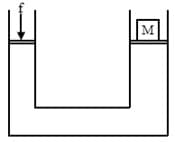
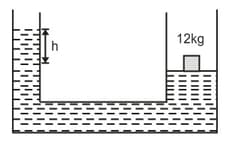
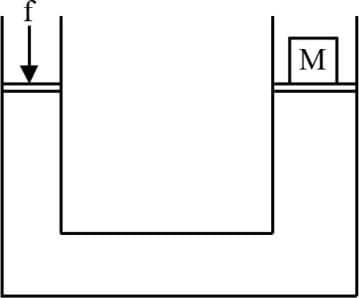
A hydraulic automobile lift has input and output pistons with diameters of and . The lift is used to hold up a car with a weight of .
What is the force on the input piston?
